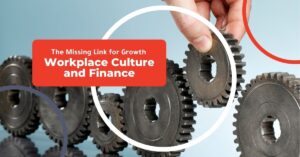Optimize Your Organization: The Power of Systems and Processes
Jul 25, 2023
Organizations rely on systems and processes to function efficiently. But how can you optimize these systems and processes so that your organization runs as smoothly as possible? The key is to understand how your organization works and to ensure that tasks are completed in the same way every time. Systematizing your processes, whenever possible, eliminates unknowns, inefficiencies and redundancies. Streamlining processes and implementing systems can help you realize significant cost savings, increase productivity, and improve decision-making. Let’s explore this more in this article.
Principles and Processes of Business Systems
Organizations are complex systems made up of interrelated parts. For example, a human resources department might be responsible for recruitment, hiring, and employee management. Each of these tasks requires different systems and processes. Understanding how all the parts of a system work together can help you identify areas where processes can be improved.
Once you understand the different components of a system, you can begin to develop processes that ensure tasks are completed in the same way each time. This can help reduce errors and inefficiencies. For example, a company might create a standard onboarding process for new employees. This would include details on how to complete tasks such as paperwork and training.
Implementing systems and processes requires a clear understanding of your organization’s goals and objectives. Once you have identified these, you can develop strategies to optimize processes and ensure they are aligned with the organization’s goals.
Benefits of Streamlining Workflows
Organizations that have optimized their systems and processes can realize many benefits.
- By streamlining processes, organizations can make decisions faster and with more accuracy. This can lead to better customer service, improved customer satisfaction, and increased profitability.
- Streamlining processes can also lead to cost savings. By reducing errors and inefficiencies, you can lower operational costs. In addition, streamlining processes can lead to increased productivity. This can result in more work being done in less time, further reducing costs.
Creating a More Functional Organization by Optimizing Systems and Processes
Disorganization, inefficiency, and generally broken (or simply never built) systems and processes can be insidious to performance; an organization rarely thinks of itself as dysfunctional. In fact, most of us probably assume hey, things are running pretty smoothly. If you can’t prove it with documents, guides, SOPs and best practices that the key players in your organization can point to and acknowledge they understand (and implement), you’re probably in need of a refresh or a fresh start.
- Start by identifying areas where processes can be improved. Using data to identify inefficiencies and then develop systems and processes to address them.
- Have a clear understanding of the organization’s goals and objectives. This can help ensure systems and processes are designed to achieve the desired results.
- Having a system in place to measure the success of new processes. This can help you ensure that the changes have the desired effect.
It’s also essential that diverse groups are involved in developing or tuning your systems and processes. C-Suite leaders who aren’t out on the manufacturing floor or in the sales floor must involve those who are in evaluating and creating new or updated ways of doing things.
Finally, implementation has to be largely friction-free. Integrating a new ERP (Enterprise Resource Planning) platform with all kinds of cool features and functions or subscribing to that all-powerful CRM, is not creating a new system or process; it’s only if those things are adopted by the right users in your company, with predictable and repeatable success, that processes are truly systematized. Don’t get stuck in the mud of confusing activity for performance.
Conclusion
Organizations that optimize their systems and processes can realize significant cost savings, increased productivity, and improved decision-making. By understanding how your organization and its people work and by engaging the right people and tools, you can optimize your organization and realize these and many other benefits.


